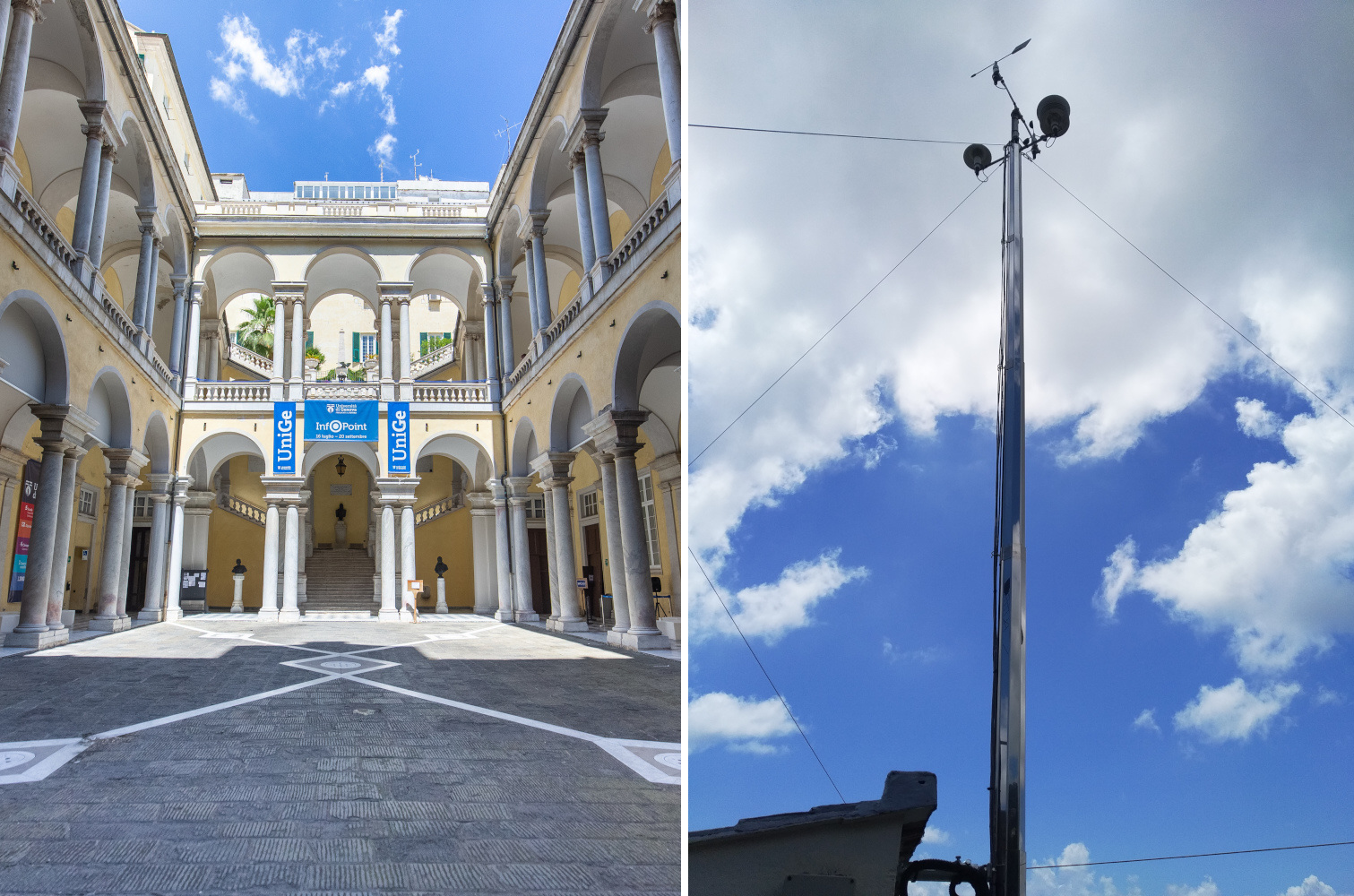

The historic Meteorological Observatory of the University of Genoa has always been located in the 17th-century building, home of the University of Genoa, located at Via Balbi N°5 in Genoa. The key point of the Observatory, of fundamental importance for its historical data series, is the fact that it has always been located in the same place and has no interruptions in the long series of recorded data.

One aspect that deserves more than a mention is the sense of duty that permeated the activities of all observers. From the beginning of measurements until December 31, 1993, the date after which the automatic station became permanently operational, there were very few occasions when instrument readings could not be taken. Even during the periods when war events raged or there were very serious personal events, there was never a lack of institutional activity by observers.
For example, Prof. Giacinto Grillo wrote these notes in April 1849, including historical references, when Bersaglieri troops repeatedly bombed the city to quell the insurrection, the causes of which must be sought in the events that followed the annexation of the Republic of Genoa to the Kingdom of Sardinia:
"Il marinaio del Regio Arsenale di Marina, incaricato di osservare l'altezza del livello del mare e dell'idrometro e di recarne quotidianamente la nota a questo Osservatorio, essendosi allontanato da quel luogo, attesi gli avvenimenti deplorabili succeduti in questo giorno e nei successivi, resta perciò interrotta per ora la serie di quelle osservazioni.
Le ultime osservazioni del giorno 4, le prime del 6 e tutte quelle del 5 hanno il pregio singolare di essere fatte sotto il fuoco continuo delle artiglierie collocate sui bastioni di San Benigno, la cui fronte situata dirimpetto a questo Osservatorio ne è soltanto lontana duemila metri: bocche le quali servite dai nostri fratelli Piemontesi sotto gli ordini del generale Alfonso della Marmora, meno scrupolosi che nol furono l'anno scorso all'assedio di Peschiera, ci regalano nonostante i santi giorni che corrono, proietti d'ogni specie comprese bombe e granate, alcuni de' quali colpiscono la stessa Università ed altri punti vicinissimi all'Osservatorio”.

Many thanks to Roberto Pedemonte for his contribution in reconstructing the history of the Observatory.